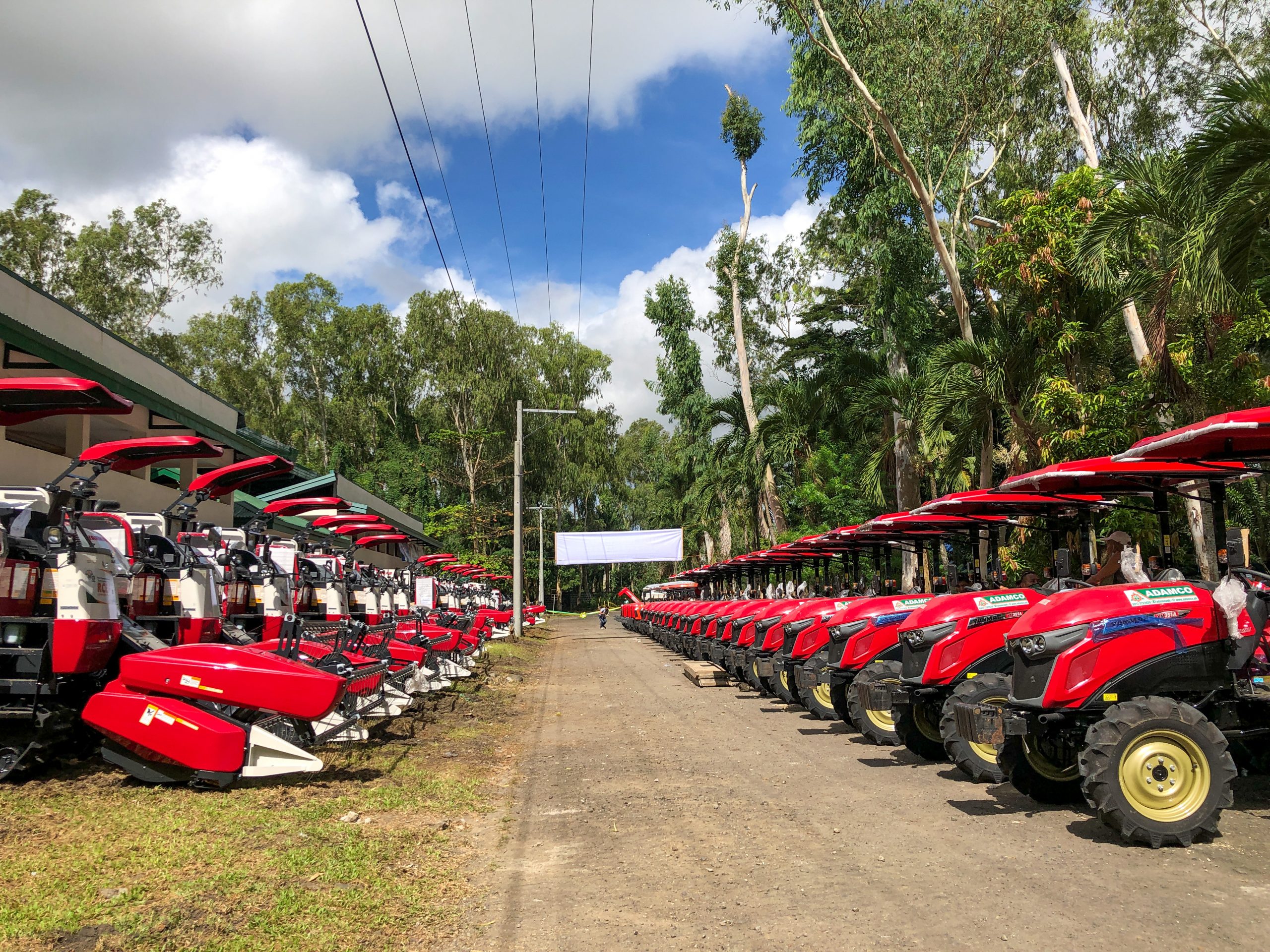
Around 6,552 Negrosanon rice farmers who belong to the 42 qualified farmers cooperatives and associations (FCAs), are expected to benefit from the Php170.1 million farm machiner grant distributed under the Rice Competitiveness Enhancement Fund-Mechanization Program on November 11 in Bacolod, Negros Occidental.
A total of 177 units of farm machines were distributed to FCAs that include Four Wheel Tractors, Hand Tractors, Floating Tillers, PTO Driven Disc Plow/Harrows, Walk-behind Rice Transplanters, Riding Type Rice Transplanters, Rice Reapers, Rice Combine Harvesters, Recirculating Dryers, Single Pass Rice Mills, Multi-Stage Rice Mills, and Impeller Rice Mills.
Dr. Baldwin G. Jallorina of the Philippine Center for Postharvest Development and Mechanization (PHilMech) graced the ceremony and said the farm machines can lower the cost of production for palay (unmilled rice). He also challenged the provincial government to help rice farmers by setting up warehouses that can host dryers and rice mills that PHilMech can provide.
“Naniniwala ako na mapapababa natin ang postharvest losses kung mayroong mga mechanical dryers at rice mills. Kaya, I’m challenging the provincial government na kung kaya ninyong mag-complement at magpagawa ng mga warehouse para sa mga FCAs sa inyong probinsya, we will provide dryers and rice mills under the program,” Director Jallorina emphasized.
He also highlights the benefits of rice mechanization to the present crop of farmers and the next generation.
“Sa tulong ng mga makinaryang ito, nawa ay maengganyo na natin ang ating mga anak na tumulong sa pagsasaka. Dahil ngayon, gamit ang mga makinarya hindi maghapong nakayuko, at pwede naring nakasapatos habang gumagawa sa bukid,”Jallorina said.
Regional Technical Director Jose Albert A. Barrogo of the Department of Agriculture-Regional Field Office 6, who also graced the ceremony, posed a challenge to the FCAs in the province who were given the farm machines at no cost.
“This is now the big challenge, kayo na ang may responsibilidad sa mga makinaryang ito, hindi na kami. Nais naming makita na kayo’y umasenso sa pamamagitan ng mga makinaryang ito,” Engr. Barrogo said.
Meanwhile, Governor Eugenio Jose V. Lacson of the province of Negros Occidental thanked PHilMech for its efforts to ensure the food security of the country and the viability of
“To PHilMech thank you for your efforts in ensuring food security and for making the country’s agriculture sector more viable by empowering our farmers with appropriate production and post-production mechanization technologies, these will definitely improve their capacity for competitiveness and profitability,” Governor Lacson said.
Around 26 municipalities and cities were covered in the distribution under the 2021 funds and excess funds from the 2019 and 2020 competitive biddings. These include San Carlos City, Calatrava, Don Salvador Benedicto, Cadiz City, Sagay City, Murcia, Victorias, Bago City, Pontevedra, Valladoid, Pulupandan, San Enrique, La Carlota City, Hinigaran, Moises Padilla, La Castillana, Isabela, Binalbagan, Sipalay City, Himamaylan City, Kabankalan City, Ilog, Cauayan, Candoni, and Hinobaan.
Meanwhile, farmer-beneficiaries magnify the benefit of machines to their organizations and promise to be good stewards of the machinery grants.
“Mahalin natin ang ating mga magtatanggap na makinarya na parang mga asawa natin, para makinabangan din ng susunod na henerasyon na magsasaka,” Francisco Solis of Man-uling Farmers Small Farmers Irrigation System, said.
Malaking tulong yung matatanggap naming tractor at combine harvester dahil mahirap nang maghanap ng tao na magtatrabaho sa bukid sa mga panahong ito,” Jean Mar Tagle of Palala Farmers Association, said.
Other local government officials of Negros Occidental, provincial and municipal agriculturists from the Department of Agriculture who are present in the ceremony also expressed their gratitude to PHilMech.
This machinery distribution is implemented by PHilMech with funds provided through the Rice Tariffication Law or RA 11203 principally authored by Senator Cynthia A. Villar.
Article by John Lloyd P. Mina











